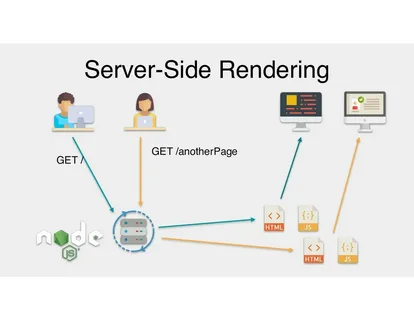Server-side development focuses on the backend operations of web applications. It processes user requests, manages databases, and ensures smooth functionality. Without it, web applications would lack dynamic features and fail to store or retrieve data effectively.
Why Server-Side Development Matters
Enabling Dynamic Functionality
Static websites provide limited interaction. Server-side scripts process user input, retrieve information from databases, and generate dynamic content.
Handling Data Securely
User data must be stored, processed, and transmitted securely. Server-side technologies implement encryption, authentication, and authorization mechanisms to protect sensitive information.
Ensuring Scalability
Web applications must handle increasing traffic efficiently. Server-side developers design scalable architectures that support growth and maintain performance.
Key Technologies in Server-Side Development
Programming Languages
Developers use languages like Python, PHP, Java, Node.js, and Ruby. Each language offers unique advantages for handling server-side logic.
Databases
Web applications rely on databases to store and manage data. MySQL, PostgreSQL, MongoDB, and Firebase are widely used for structured and unstructured data storage.
API Development
APIs enable communication between the front end and back end. RESTful and GraphQL APIs facilitate data exchange and integration with third-party services.
Web Servers and Hosting
Applications run on web servers like Apache, Nginx, and Microsoft IIS. Cloud hosting solutions such as AWS, Google Cloud, and Azure offer flexible deployment options.
Essential Skills for Server-Side Developers
Proficiency in Backend Languages
Developers must master backend languages to build efficient server-side logic. Understanding syntax, data structures, and frameworks enhances development capabilities.
Database Management
Efficient data retrieval and storage are critical. Developers must understand relational and NoSQL databases, query optimization, and indexing techniques.
Security Implementation
Cybersecurity threats continue to evolve. Server-side developers implement best practices, including hashing, SSL encryption, and access control mechanisms.
Problem-Solving and Debugging
Code issues can disrupt application functionality. Developers must analyze errors, debug code, and optimize performance to ensure smooth operation.
Career Opportunities in Server-side Development
High Demand for Skilled Professionals
Businesses across industries rely on web applications. Companies seek server-side developers to build and maintain robust digital solutions.
Lucrative Salaries and Growth Potential
Server-side developers earn competitive salaries. With experience, professionals can advance to roles like Lead Developer, Software Architect, or CTO.
Freelance and Remote Work Opportunities
Many developers work remotely or take on freelance projects. The flexibility of server-side development enables professionals to collaborate with global clients.
How to Become a Server-Side Developer
Learn Programming Basics
Understanding programming fundamentals, algorithms, and data structures is crucial. Beginners should start with languages like Python or JavaScript before exploring backend frameworks.
Gain Hands-On Experience
Building real-world projects helps developers apply theoretical knowledge. Working on personal projects, contributing to open-source software, and collaborating with teams enhance skills.
Master API Development
Developers must understand RESTful and GraphQL APIs. Learning how to build, secure, and integrate APIs ensures seamless communication between application components.
Stay Updated with Industry Trends
Technology evolves rapidly. Developers should continuously learn about new tools, frameworks, and best practices to stay competitive in the job market.
Future Trends in Server-Side Development
Serverless Computing
More companies are adopting serverless architectures. Developers will design applications without managing traditional server infrastructure.
AI and Machine Learning Integration
AI-driven applications require powerful server-side support. Developers will integrate AI and machine learning models to enhance automation and user experience.
Increased Emphasis on Cybersecurity
As cyber threats grow, developers must prioritize security. Implementing advanced authentication methods and encryption techniques will be essential.
Conclusion
Server-side development powers the digital world. It ensures web applications function efficiently, handle data securely, and scale effectively. As technology advances, server-side developers will continue to play a crucial role in shaping the future of web applications.






